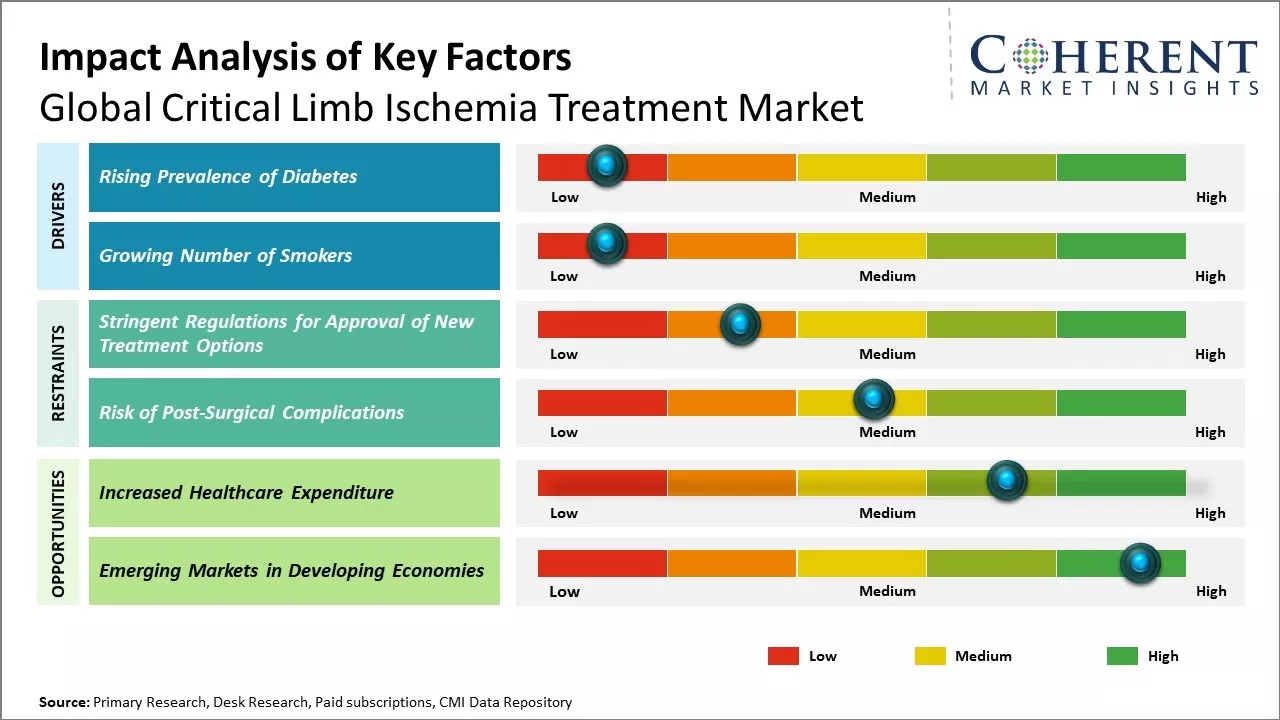The global critical limb ischemia treatment market is estimated to be valued at USD 5.55 Bn in 2025 and is expected to reach USD 10.02 Bn by 2032, exhibiting a compound annual growth rate (CAGR) of 8.8% from 2025 to 2032.

To learn more about this report, Request sample copy
The critical limb ischemia treatment market is expected to witness prominent growth over the forecast period. The rising geriatric population worldwide and the growing prevalence of peripheral artery disease are major factors contributing to the increased demand for critical limb ischemia treatment. Furthermore, the increasing adoption of minimally invasive surgeries and the growing number of regulatory approvals for advanced treatment options are expected to provide new opportunities for players in the market. However, the high cost of treatment and lack of reimbursement policies in developing nations may hinder the market growth.
Rising Prevalence of Diabetes
The global prevalence of diabetes has been steadily increasing over the past few decades. According to estimates, over 460 million adults were living with diabetes in 2019, compared to around 108 million in 1980. Type 2 diabetes in particular has risen dramatically worldwide due to increasing levels of obesity and sedentary lifestyles. Diabetes greatly elevates the risk of developing peripheral artery disease and critical limb ischemia, as high blood sugar levels can damage and narrow the arteries supplying blood to the legs and feet over time. It is projected that by 2030, diabetes will affect over 700 million people globally if preventive measures are not taken. As more people are afflicted by this chronic condition, cases of CLI Critical Limb Ischemia are also expected to grow substantially. Early treatment of diabetes and maintaining optimal blood sugar control can help reduce complications, but many patients may still develop PAD and require CLI Critical Limb Ischemia treatment. The growing diabetes epidemic worldwide will therefore act as a key driver for the critical limb ischemia market in the coming years. The increasing prevalence of diabetes poses a heightened risk for patients developing chronic limb-threatening ischemia (CLTI) due to peripheral arterial disease. For instance, with diabetes rates projected to rise, as indicated by the International Diabetes Federation's 2022 statistics, from 32 million in the U.S. to 36 million by 2050, there is a growing concern over the potential damage caused by high blood sugar levels to nerves regulating heart and blood vessel functions. This scenario is anticipated to drive the demand for more effective treatments, thereby stimulating the market growth in arterial disease management.
Joining thousands of companies around the world committed to making the Excellent Business Solutions.
View All Our Clients